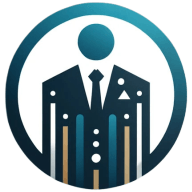Tailoring Executive Coaching for Different Leadership Styles
Navigating the nuances of leadership requires a bespoke approach, and that's where expert insights make all the difference. This article delves into the art of tailoring executive coaching to fit the distinct styles and preferences of leaders. With contributions from seasoned professionals, it offers a roadmap for crafting strategies that resonate with the authentic self of each executive.
- Adapt Strategies to Leader's Unique Approach
- Craft Custom Solutions for Diverse Personalities
- Assess and Customize for Individual Needs
- Meet Leaders Where They Are
- Tailor Approach to Communication Preferences
- Align Coaching with Leader's Authentic Self
Adapt Strategies to Leader's Unique Approach
I tailor my coaching approach by first understanding a leader's personality, strengths, and challenges through deep listening and assessment. I adapt my communication style, strategies, and feedback to align with their unique leadership approach while challenging them to grow. For example, I worked with a highly analytical, data-driven executive who struggled with emotional engagement. Instead of pushing generic leadership tactics, I introduced structured EQ-based frameworks that allowed him to measure and track his emotional intelligence growth. By linking emotional intelligence to performance metrics, he embraced a more balanced leadership style without feeling it was subjective or abstract. This personalized approach helped him connect better with his team, boosting engagement and productivity.

Craft Custom Solutions for Diverse Personalities
Tailoring coaching to different leadership styles is like crafting a custom pitch deck--it's all about understanding the individual's unique story, strengths, and challenges. I remember working with a founder who was an incredibly analytical thinker, someone who couldn't make a decision without three spreadsheets and a full SWOT analysis. While their thoroughness was a strength, it often led to paralysis when speed was critical for their startup's growth. At Spectup, we approached this by integrating decision-making frameworks into our coaching, breaking complex problems into smaller, time-bound choices while still respecting their need for structure. One tactic was setting up what we called "data-light sprints" for smaller decisions, easing them into acting faster without feeling unprepared.
On the flip side, I've also coached a visionary founder who couldn't be bothered with details. Big-picture thinkers can be incredibly inspiring, but their ideas often stall because the groundwork isn't laid. For this individual, we worked one-on-one to slice their lofty goals into tangible, actionable steps, and our team helped manage timelines and accountability so things didn't fall through the cracks. Balancing these styles sometimes involves a bit of humor--I might jokingly suggest to the visionary that "yes, we can conquer the world, but let's start with this one email draft." Whether analytical or visionary, the key is understanding how they're hardwired and designing the playbook that makes their leadership shine.

Assess and Customize for Individual Needs
To tailor my coaching approach, I first assess the client's leadership style and personality. Understanding whether they are more directive, collaborative, analytical, or charismatic allows me to customize lessons and communication strategies. For instance, with a client who has a collaborative and empathetic leadership style, I might focus on improving their ability to inspire and lead team discussions in English, ensuring they can articulate their ideas clearly while also encouraging open dialogue.
Example: One of my clients, a marketing manager with a collaborative leadership style, wanted to lead international meetings with more confidence. I adapted my coaching by incorporating role-plays and real-world scenarios where she had to facilitate group discussions. We also worked on enhancing her active listening and motivational language, ensuring she could encourage input from her team while maintaining clear communication. This approach helped her feel more comfortable and authoritative during meetings, without losing her natural collaborative approach.

Meet Leaders Where They Are
Tailoring my coaching approach to different leadership styles comes down to understanding how each leader processes information, makes decisions, and responds to feedback. Some leaders thrive on data and structure, while others rely on intuition and big-picture thinking. The key is adapting my communication and strategy to match their strengths while addressing blind spots.
One specific example was coaching a highly analytical CEO who struggled with delegation. They wanted data-driven justifications for every decision and hesitated to trust their team. Instead of pushing traditional leadership advice, I tailored my approach by using performance metrics and case studies to show the impact of empowering their employees. I introduced a structured decision-making framework that satisfied their need for control while gradually shifting tasks to their team. Over time, they became more comfortable with delegation without feeling like they were losing oversight. Effective coaching isn't about forcing one method on every leader--it's about meeting them where they are and guiding them toward growth in a way that makes sense to them.

Tailor Approach to Communication Preferences
A one-size-fits-all approach simply doesn't work in leadership coaching. Each leader brings a unique set of strengths, weaknesses, and communication preferences. Tailoring the coaching process involves understanding these individual differences and adapting accordingly. For instance, I worked with two leaders who, on the surface, seemed to have similar challenges with team motivation. However, their underlying leadership styles were vastly different.
One leader was highly analytical and data-driven. They responded well to structured frameworks and logical explanations. My coaching focused on providing them with tools to analyze team dynamics, identify patterns, and implement data-backed strategies for improvement. On the other hand, the other leader was more relationship-oriented and intuitive. They valued emotional connection and collaborative decision-making. With them, the coaching centered on developing their emotional intelligence, improving communication skills, and fostering a more inclusive team culture. Here's what you need to know: the key is to be flexible and adaptable, continuously assessing the leader's needs and adjusting the approach as necessary.

Align Coaching with Leader's Inner Fire
I recognize that each leader's style and personality are unique, requiring a customized approach. I begin by conducting a comprehensive assessment to understand individual strengths, challenges, goals, blindspots and patterns. This allows me to align my coaching strategies to meet their specific needs.
Example: I once worked with a leader who had a highly analytical and data-driven approach. While this precision benefited their organization, it sometimes led to challenges in team engagement and adaptability. To address this, we focused on enhancing emotional intelligence and capacity to connect, incorporating mindfulness practices to foster empathy and flexibility. This tailored approach resulted in improved team dynamics and greater confidence in the leader and her team members.
By adapting my coaching methods to align with each leader's inherent style, I facilitate personal growth that resonates with their authentic self, leading to sustainable development and fulfillment.


